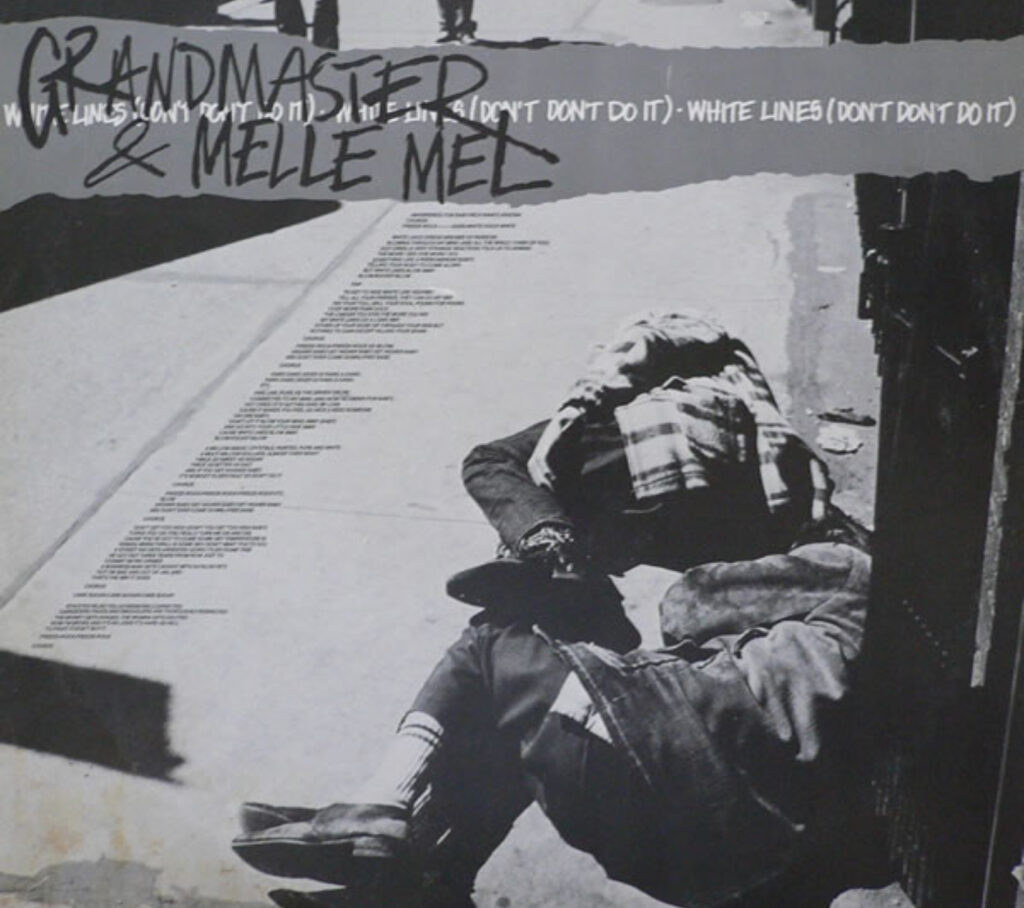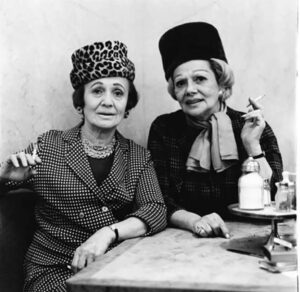There are certain songs that don’t just exist in history—they loom in it. Released in 1983, White Lines (Don’t Don’t Do It) by Grandmaster Melle Mel is one such sonic specter. A seven-minute cautionary tale wrapped in a pulsating beat, the track is both a product and a prophecy of American culture at the apex of its 1980s hedonism. With its iconic bassline, theatrical vocal delivery, and anti-cocaine message, the song has lived countless lives: as a party anthem, a PSA, a club hit, and a cultural mirror.
But beyond the superficial nostalgia of neon lights and shoulder pads lies a more complex narrative. White Lines was born at a moment when drugs, greed, and capitalism formed a potent cocktail in American cities—particularly within marginalized communities. Today, amid a renewed reckoning with systemic inequality and substance addiction, the track’s message rings louder than ever.
This editorial reconsiders White Lines not just as a musical artifact, but as a dramatized lens on society’s relationship with euphoria, delusion, and consequence. What happens when excess becomes the norm? What role does art play in sounding the alarm? Melle Mel, in his booming cadence, seemed to have always known.
The Making of an Anti-Anthem
White Lines is often misremembered as a party banger. Its infectious rhythm—borrowed and interpolated from Liquid Liquid’s Cavern—suggests a celebratory tone. But the song’s DNA is closer to a protest poem. With lyrics like “Ticket to ride, white line highway / Tell all your friends, they can go my way,” Melle Mel was crafting a track about self-destruction that sounded like self-delight.
Produced by Sylvia Robinson—the mastermind behind Sugar Hill Records—and largely credited to Grandmaster Flash and the Furious Five (though Flash had no involvement), White Lines is a prime example of the paradoxical 1980s art form: danceable despair. It is theatrical in every syllable, exaggerated almost to the point of parody. But therein lies its power.
Melle Mel’s vocal performance is operatic, swooping from gravelly warnings to manic enthusiasm. His voice dramatizes every line like a Greek chorus in breakbeat. “DON’T—DON’T—DO IT” echoes like a whispered shout through a cocaine fog. In an era where subtlety was an afterthought, White Lines thrived on the extravagant.
Cocaine, Capital, and the New American Drama
To understand the impact of White Lines, one must understand its time. The early 1980s were drenched in consumerist glamor, fueled by deregulated markets, Reagan-era policies, and the Wall Street fantasy. Cocaine became the drug of choice not just for the streets, but for boardrooms.
Unlike the heroin-choked ’70s, cocaine arrived with a veneer of luxury. It was, for a time, socially permissible—glamorous even. It didn’t sedate; it energized. It didn’t numb; it intensified. That illusion, however, was deadly. As crack cocaine began to infiltrate Black and Latino communities, the disparity in response was jarring. The War on Drugs would criminalize addiction, but it would be songs like White Lines that humanized it.
In retrospect, Melle Mel’s dramatized delivery wasn’t over-the-top—it was precise. It matched the surreal reality of a nation high on itself. His cries were theatrical because the moment was. “A street kid gets arrested, gonna do some time / He got out three years from now just to commit more crime,” he spits, indicting the systemic loops that trap users.
White Lines did not attempt to be journalistic. It was expressionistic. It exaggerated not for style but for survival.
Retro as Resistance: A Song That Outlived Its Era
With its hypnotic bass groove and anthemic chorus, White Lines continues to be sampled, remixed, and referenced across decades. From Duran Duran’s 1995 cover to its nods in Quentin Tarantino films and its inclusion in Grand Theft Auto: Vice City, the track has never fully retreated into obscurity.
Why? Because retro itself has become a language of resistance. By evoking the past, White Lines allows us to critique the present. In a culture where vintage fashion and nostalgic soundtracks reign, the song’s timelessness underscores its warning. It’s retro, yes—but not ironic.
The song’s enduring power lies in how it dramatizes its message without irony. In the streaming era, where songs often blur into background noise, White Lines still demands attention. It doesn’t whisper. It doesn’t wait. It crashes in like a fevered vision, a reminder that the party is only one line away from peril.
A Rapper as Prophet: Melle Mel’s Legacy
Grandmaster Melle Mel is often sidelined in mainstream hip-hop history. Overshadowed by contemporaries like Grandmaster Flash or successors like Rakim and KRS-One, Mel was nonetheless a pioneer in using hip-hop as a form of social critique.
Before rap was a billion-dollar industry, it was a community’s megaphone. And Mel’s delivery was operatic because it had to be. In an era with few platforms for Black expression, rap’s early stars performed with the urgency of prophets.
Melle Mel’s voice is filled with preacherly cadence, street-corner swagger, and theatrical command. He didn’t just rap a warning—he performed it. “Higher, baby!” he sings, not in celebration but as a mimic of seduction. It’s a dramatization of temptation. He voices the addict, the dealer, the system. One man performing the roles of a collapsing society.
Mel helped establish the idea that rap could confront real issues—poverty, drugs, incarceration—while still commanding dance floors. He wasn’t simply a product of the street; he was its narrator.
White Lines in the Age of the Opioid Crisis
Today, America finds itself in a new drug epidemic: opioids. Yet the cultural treatment of addiction remains uneven. Whereas White Lines sounded a community-wide alarm about cocaine and crack, contemporary pop culture rarely addresses fentanyl with the same dramatic force.
If White Lines were released today, would it go viral? Or would it be dismissed as preachy? Perhaps the track’s enduring value lies in its refusal to sanitize. Its urgency cuts through apathy. The youth of the 1980s might not have all listened to its message, but they couldn’t ignore its sound.
The comparison between cocaine in the 1980s and opioids in the 2020s reveals a shift not just in substance but in soundtrack. The 1980s had flamboyance. The 2020s, by contrast, often retreat into minimalism and melancholy. White Lines didn’t mourn quietly; it screamed.
Style, Excess, and the Aesthetics of Warning
From a fashion standpoint, the White Lines era was maximalist. Tracksuits, thick gold chains, jheri curls—every element was performative, theatrical, exaggerated. But these visuals weren’t just aesthetic. They were armor.
In a time when Black and Latino communities were disproportionately targeted by drug policies, style became resistance. Melle Mel’s image—muscular, regal, often shirtless—was a deliberate inversion of vulnerability. If the system saw you as expendable, then you presented yourself as indestructible.
The music video for White Lines, directed by New York-based Fab 5 Freddy, captured this tension brilliantly. Stylized dance scenes play out in stark, washed-out urban spaces. It’s not just a video—it’s a warning dressed as entertainment.
This was the height of dramatization in American society: MTV, Reagan speeches, D.A.R.E. campaigns, crack vials glittering like glass jewels. White Lines understood that you had to be louder than the culture around you to be heard.
The Song’s Structure as Drama
White Lines functions like a stage play. Its verses are scenes, its choruses like acts. The song begins with exuberance (“Vision dreams of passion”) and descends into despair. By the end, Mel is practically convulsing with intensity.
The track follows no traditional pop structure. It’s sprawling, recursive, sometimes chaotic—mirroring the experience of addiction itself. There’s something operatic in how the narrative spirals, never quite resolving.
Each vocal repetition of “Don’t do it” is both a command and a confession. The repetition mimics obsession. It dramatizes the cycle.
Still Don’t Do It
Forty years on, White Lines has not lost its edge. If anything, it’s gained new relevance. As society continues to grapple with the spectacle of excess—whether through drugs, social media, or consumerism—the song’s urgent message remains pointed: don’t let illusion become identity.
Melle Mel didn’t just write a song. He wrote a warning in boldface, backed by bass. In a world built on dramatization, White Lines used performance to tell the truth. It remains one of hip-hop’s most enduring paradoxes: a party song about devastation.
It belongs not just to hip-hop history, but to the canon of American cultural critique. It is retro—but prophetic. Nostalgic—but radical. Entertaining—but deadly serious.
The party may always tempt, but White Lines is there to remind you—Don’t. Don’t. Do it.
No comments yet.








